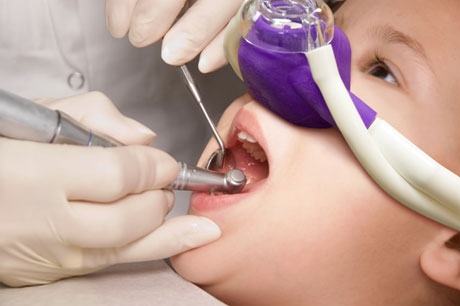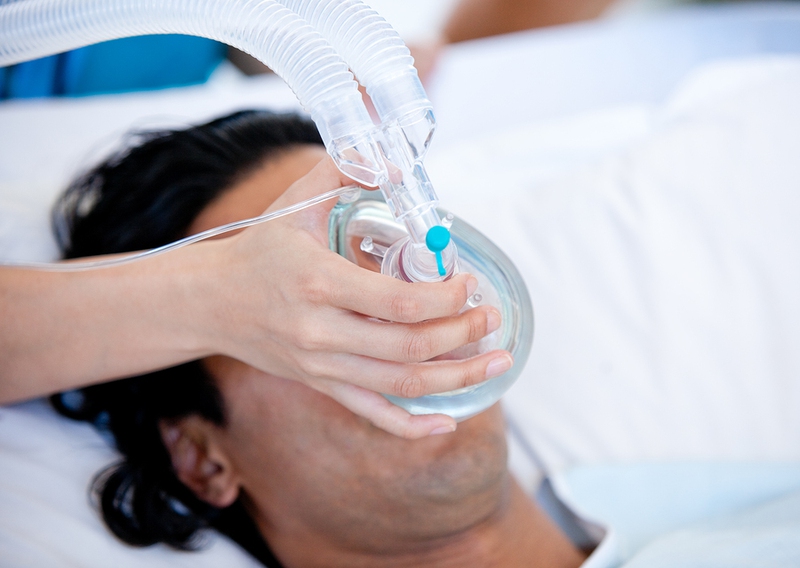Nitrous oxide, popularly known as laughing gas, has other epithets as well like happy gas, nitrous, nitro, inhalation sedation, and so on. Nitrous oxide in its gaseous state is non-flammable and colorless under normal or standard conditions of temperature and pressure. The gas which usually smells and tastes somewhat sweet is sold in canisters. The benefits associated with laughing gas may be known to you as you might have heard its name being mentioned in office or family discussions. Nitrous oxide could be used as a sedative by the dentist you’re planning to visit for getting a troublesome tooth extracted.

What Does Laughing Gas Do?
Why does laughing gas work?
Owing to nitro’s analgesic or painkilling attributes, the gas is extensively used in dental procedures. Patients are able to receive treatment comfortably and safely as the gas has a becalming effect helping them to feel relaxed during the dental procedure. Nitrous oxide being non-allergenic in nature does not cause any irritation, but it can influence the central nervous system in more ways than one.
Although the exact mechanisms of how the gas impacts the center nerve system are yet to be determined, it is an established fact that N2O numbs the basic sensations of pain, touch, and hearing (as there is sufficient evidence to support the observations). Nitrous oxide also has a disinhibiting influence on the limbic system which comprises of a collection of brain structures like the amygdale, hippocampus, hypothalamus, fornix, and fornix columns. However, inhaling the gas is remarkably safe as it doesn’t interfere with your concentration nor adversely affects your memory.
What does laughing gas do at the dentist's?
It has been proven time and again that nitrous dioxide is non-toxic for adults and children alike. And due to this fact, the gas is widely used as a sedative/anesthetic during dental treatment procedures. You’ll feel the numbing effects of the gas soon after you’ve inhaled it. After your treatment, the desensitization sensations begin to fade away and you’re able to get back to working ways in a short span of time. So, "what does laughing gas do to you" in a dentist’s chamber?
Dentists around the world have used the laughing gas for its multifarious benefits especially during medical procedures. Some of the most common or practical benefits are outlined below:
You remain calm and cool while talking to the dentist.
Saliva flow slows down and pharyngeal reflex is somewhat abated.
Due to its palliative property, you hardly feel any pain while treatment is being conducted.
Since you retain your consciousness, you’re able to feel the effects of the treatment.
Depending upon your physical and/or mental state, the degree of sedation can be increased or decreased at any phase of the treatment process.
Nitrous oxide can be used as a safe sedative for children who’re apprehensive of taking injections.
How does laughing gas feel?
Though individual experiences differ somewhat from patient to patient, some of the common sensations reported are listed below:
Tickling or tingling sensation in the upper and lower limbs
A feeling of warmness
Lack of sensation in the tongue, mouth, hands, and feet
A buzzing or whirring sensation where one hears noises that are distant but distinct
Feeling of ecstasy coupled with a sensation of weightlessness or heaviness in the limbs
Is Laughing Gas Safe?
It is safe
Researches on drug reactions and interactions with nitrous oxide have been well-documented. These documentations overwhelmingly bear out that nitro is completely safe for most people and that’s why it is hugely used as a sedative during medical procedures. Additionally, nitrous oxide doesn’t produce any allergenic reactions and is not known to have any noticeable side-effects. And it is for these intrinsic characteristics that the gas serves as an anxiolytic, analgesic, and euphoric anesthetic by dentists.
As for labor
Besides, laughing gas can also be used during labor.
Compared to an epidural, nitrous will not completely desensitize any specific part or area of your body.
At the same time, the gas may not offer you instant relief from pain like narcotics but will not make you overly nervous or anxious either. You’ll have the sensation of pain but it won’t to an extent that you’ll feel inconvenienced.
Although more research more are needed, past studies have showed that nitrous oxide displays no side effects on the new baby or the mother's ability to breastfeed.
There are precautions
Knowing "What does laughing gas do?" may be not enough. Although it is very safe, there are still some precautions that should be mentioned.
In exceptional circumstances, surgeons and anesthetists may refrain from using N2O on patients suffering from lung ailments or disorders like bronchitis and asthma. Inform your dentist if you’ve had any operation recently and/or are taking medications for some ailment especially if he or she is thinking of using nitrous as a sedative during your procedure.
What's more when used in labor, dizziness and nausea may happen, but these symptoms will disappear after stopping inhaling the gas. Still do consult your doctor if you want to use laughing gas when giving birth.





View All Comments /Add Comment